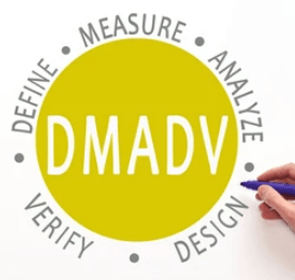Any business aims to reduce errors and maximize output. The six sigma quality control methodology helps companies and organizations achieve that in the most efficient way possible. Profitability, customer loyalty, better supply chain, and efficient time management are the other advantages of using the Six Sigma methodology.
After all, when a process promises not more than 3.4 defects per million opportunities, how much more statistically perfect can it be?
It is no wonder that project managers and supervisory officials are queuing up to learn about the 6 Sigma principles and implement them to improve efficiency in their organizations.
But how does it work? And what are the methodologies involved in it? Are there specific tools that are involved in its implementation? Read on to find out.
What are the sub-methodologies involved in six sigma?
There are two main sub-methodologies involved in six sigma: DMAIC and DMADV. Each process consists of different steps, but both deliver results in their way. DMAIC is used to improve existing customer products or services and achieve greater customer satisfaction. DMADV is helpful when new methods have to be developed since the existing ones don’t deliver results.
DMAIC
DMAIC is a short form or acronym which stands for define, measure, analyze, improve and control. It involves the use of statistics and aims at improving a business process that already exists. It consists of the following steps.
Define
Firstly, the goals, requirements, and customer deliverables of the business are identified. Any faulty process is also identified. This is followed by selecting the resources that will be necessary to measure the progress.
Measure
In this step, process mapping is done, defining each detail to achieve the final result. Sufficient data is collected to be able to determine the efficiency of a process. It could include invoicing processes and customer ordering in businesses.
Then, a measurement plan is chalked out, which provides the amount of data to be collected, measurements to be used, and identifying the methods to do it.
Lastly, data is collected for a certain period, depending on the cost collection, measurement frequency, and the demand of the project at hand.
Analyze
The main reasons behind any defects caused by variables in a process are recognized by studying the available data thoroughly. This step is crucial because it helps businesses avoid a problem rather than deal with it later.
Statistical analysis is done with the help of various tools like fishbone diagrams, linear regression, root-cause analysis, hypothesis testing, and process maps.
Improve
This step holds its importance since this is where solutions to existing problems are found. Rather than statistical analysis and data collection, newer ideas are sought.
Any relationships between variables are identified. Any concept that seems feasible is tested on a pilot basis, and the one which is found to be the most appealing is selected. The final idea or solution that is chosen should be able to eliminate the defect.
Control
This is the last but most important phase of the DMAIC process. The new process that has been selected is tracked closely in this step to see if it delivers the desired results. Any changes and ideas that are thought of previously are implemented here.
Before being implemented, a proper measurement system is selected. Several tools like control charts are used to measure performance. At the same time, an action plan is worked out if things don’t go according to plan.
This step ensures that measures are put in place to ensure the process improvements are strictly adhered to, failing which, the whole process would become futile.
DMADV
DMADV, which means define, measure, analyze, design, and verify, is used to change an existing process and consists of five steps. The first three of these are similar to those used in DMAIC and need no repetition. However, the last two are exclusive to this step.
Design
The project team designs the product or service according to the customer’s needs in the design step. The processes that have been created are used to deliver the customer deliverables.
A process expert is usually involved in this step since they are thoroughly acquainted with the steps involved; for example, process experts know which input will influence the output when it is changed even slightly.
Verify
The project team receives feedback from the customer and works accordingly to meet the demands. Critical quality control or CTQ measures are established to trace the customer’s feedback after the product has finally been delivered.
Where can six sigma be used?
The six sigma methodology is used in a variety of sectors across the world.
They are used in the healthcare industry to reduce waiting time, mortality rates, and medication errors.
In the IT sector, they improve both internal and external processes of a system like online ordering.
The manufacturing industry uses six sigma for cost savings, reducing variation and cycle time, and enhancing the overall performance of a process.
The textile sector uses this methodology to improve merchandiser performance, reduce shipment rejections, improve supplier evaluations, eliminate manufacturing errors and reduce non-conformance in buyer audits.
These are the main sub-methodologies used in six sigma that help minimize defects while maximizing customer satisfaction and overall output. Successful implementation of the 6 Sigma principles is guaranteed to improve productivity while reducing waste.





